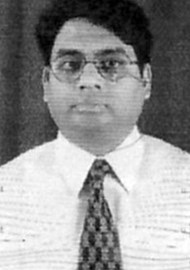Laparoscopic urologic procedures continue to attract the interest of trainees, consultants and the public, and the demand for training is on the increase [1,2,3]. The vast majority of laparoscopic procedures are laparoscopic nephrectomies and this is certainly the most common starting procedure for trainees.
Over five years of mentoring and training throughout local hospitals, certain overriding principles have become clear, not only about performing the surgery, but also in regards to setting up a laparoscopic unit. To make these easy to remember and understand we offer them as ‘the 10 commandments’.
1. Prepare yourself
Before doing anything else, make sure you are supported by your colleagues in terms of the referral of suitable cases. In addition, ensure your managers are prepared to support laparoscopic urology financially and that governance arrangements are in place.
Next, undertake training which should include arranging a mentor so that there is no lag period between training and starting out on your own cases with your mentor.
Create a laparoscopic team to support you, including arranging with the theatre manager that during your early cases you always have the same theatre staff. Send your selected team members on a training course for theatre staff - they will return enthusiastic and supportive.
Make sure to include an anaesthetist, with a good understanding of the specific physiology of the pneumoperitoneum, in your team. The entire team will need to be completely supportive during your, often protracted, first few cases.
Now you have a team and are ready to do your first case! In theatre, for each and every case, before picking up the scalpel for the first port incision, ‘get everything ready’.
- Check that the camera stack is correctly positioned and all components are working. During early cases, it can be extremely helpful to have a single assistant to hold the camera.
- Take time to ensure the patient is properly positioned, stabilised, padded and draped.
- Check the diathermy machine and both suction and irrigation are connected and working properly.
- Check that all the implements you will need are available in theatre and are working well. Check the insulation sheath of re-usable instruments.
- Do a camera white-balance, focus and adjust monitors in a position friendly to your neck muscles and run through any preparation needed by the manufacturers of any bipolar or harmonic instrument you may have.
- The leads, diathermy and suction tubing should be organised to prevent entangling during the procedure.
- Check the gas pressure and flow settings. All this needs to be done BEFORE any incision is made in the patient.
2. Port placement is everything
Take a little time to consider the optimal port placement for each patient individually, bearing in mind what it is you are going to do, the habitus of the patient, trans- or retro-peritoneal approach. Badly placed ports can turn elegant surgery into a continual struggle.
Optimally placed ports prevent crossing of instruments. Crossed instruments not only cause difficulty but will limit the movements in at least one plane for both the instruments.
Remember that port placement is the cause of a significant number of complications. Use a Hassan technique where appropriate, use radial dilating non-bladed trocars and put them in under vision, either from within the patient or through the port itself.
The correct port placement also allows the camera to pan in and out easily.
3. Counter traction shows the planes
There is a common perception that laparoscopic surgery is difficult, but this is not, or should not, be the case. Certainly, advanced laparoscopic surgery can present challenges, but in the beginning, each procedure should go smoothly.
“Badly placed ports can turn elegant surgery into a continual struggle.”
Laparoscopic surgery rests on the principle of finding planes and proceeding along these planes as far as possible. In order to find these planes it is important that the left-hand instrument holds tissues on stretch so the right-hand instrument can dissect along the planes shown by the counter traction. If you find a procedure is going slowly or progress is difficult, always check that there is sufficient counter traction. In short, most of the time, both the left- and right-hand instruments should be close together and working in the same plane but in opposite directions. Use both instruments regularly, neither should remain static.
4. Dissect enough for anatomic certainty
There will always be anomalous vessels, extra lymph tissue and distorted anatomy. Never perform an irreversible step (clip, cut, cauterise, staple or sever by any means) until you are certain of the anatomy. This is achieved by camera panning; remember perspective is important, hence the importance of knowing your anatomy and landmarks cannot be over emphasised. If you are not certain then dissect widely enough to obtain anatomic certainty. Get the area of interest in the centre of your view.
5. Blood is the enemy of vision
Haemoglobin absorbs light extremely well. Just a little bleeding soon produces a flat, red area where vision is impaired. Also, remember that bleeding not only impairs vision but also can increase gas absorption. There are many excellent, sophisticated dissection tools available now which coagulate and cut together in a myriad of ways and are safer than pure diathermy; using one of these must form part of the original plan.
Always operate with the mental attitude that zero blood loss is the only acceptable blood loss!
An easy rule to remember is “Buzz before you cut, clip before you snip, otherwise there will be blood”. Many laparoscopic surgical accidents could be avoided by following this simple rule.
6. Never work down a tunnel
Often it is tempting to progress with alacrity when all is going well. When the vessels are in sight, it is easy to head straight for them. Beware! If the approach to the objective is not broad, at the apex of the tunnel the access will become limited and any untoward event will be uncontrollable. The slightest bleeding will obliterate vision very quickly and there will be no space for rescue manoeuvres. Do not hesitate to add another port if in difficulty, especially in the obese, and know when you need to ask for help from senior colleagues.
7. Use the correct tool for the job in hand
Laparoscopic Laheys are best for fine dissection around the vessels and fan retractors work better than Petelin or Johannes graspers to lift the kidney. This may sound simplistic, but if you watch a few procedures you will undoubtedly spot incorrect instrument use which often leads to slow progress, unnecessary bleeding and needless frustration. If you are struggling, check the tools you are using. It is good practice to record your cases and review them at leisure later to see where things could improve. Learn from your errors: every surgeon makes mistakes, but a good surgeon only makes the same mistake once.
8. Think what is on the other side, hence again the perspective is important
All energy forms have some heat spread and clips may extend beyond what is clearly visible. In order to avoid accidental damage to neighbouring organs always ask yourself, what is on the other side and could I be damaging it?
9. Always check haemostasis at low pressure
Once the operation is over, it is very easy to simply bag the specimen and prepare to extract it. In terms of pressure 12cmH20 can effectively stop a great deal of venous oozing which may amount to a sufficient haemorrhage over time. Always lower the insufflator pressure and run a check of the clips and general haemostasis. Remember later to watch port extraction as far as possible. Port closure is as important as surgery itself.
10. The bag scoops like a net
Trying to contain the specimen in the extraction bag can become difficult and the bag may detach from the introducer. The trick is to use the bag somewhat like a fishing net. Hold the specimen up securely with the left-hand instrument and scoop the specimen into the bag. Do not try to ‘stuff’ the specimen into the bag as this invariably prevents the bag from opening up properly and in the ensuing blind struggle there is a risk of loosening clips or provoking other bleeding.
I recommend trainees print out these 10 commandments, and hang them in their laparoscopic theatre for regular consultation, especially when cases are not proceeding smoothly.
References
1. Sullivan ME, Jones A. Mentoring in Laparoscopic Urology. BJUI 2007;99:7-8.
2. Bariol SV, Tolley DA. Training and Mentoring in Urology: The “LAP” Generation. BJUI 2004;93:913-14.
3. McNeill SA, Tolley DA. Laparoscopy in Urology: indications and training. BJUI 2002;89:169-73.
TAKE HOME MESSAGE
-
First get everything ready
-
Port placement is everything
-
Counter traction shows the planes
-
Dissect enough for anatomic certainty
-
Blood is the enemy of vision
-
Never work down a tunnel
-
Use the correct tool for the job in hand
-
Think what is on the other side
-
Always check haemostasis at low pressure
Declaration of competing interests: None declared.







